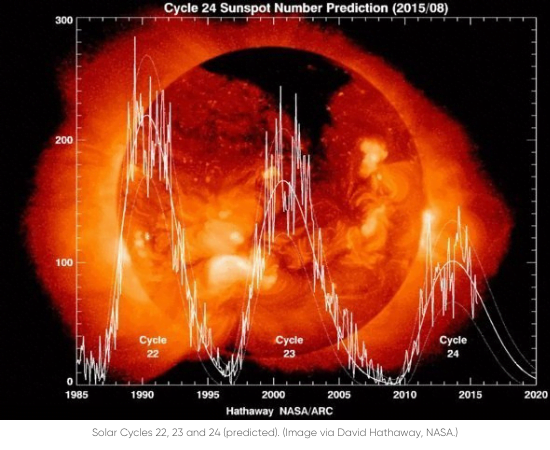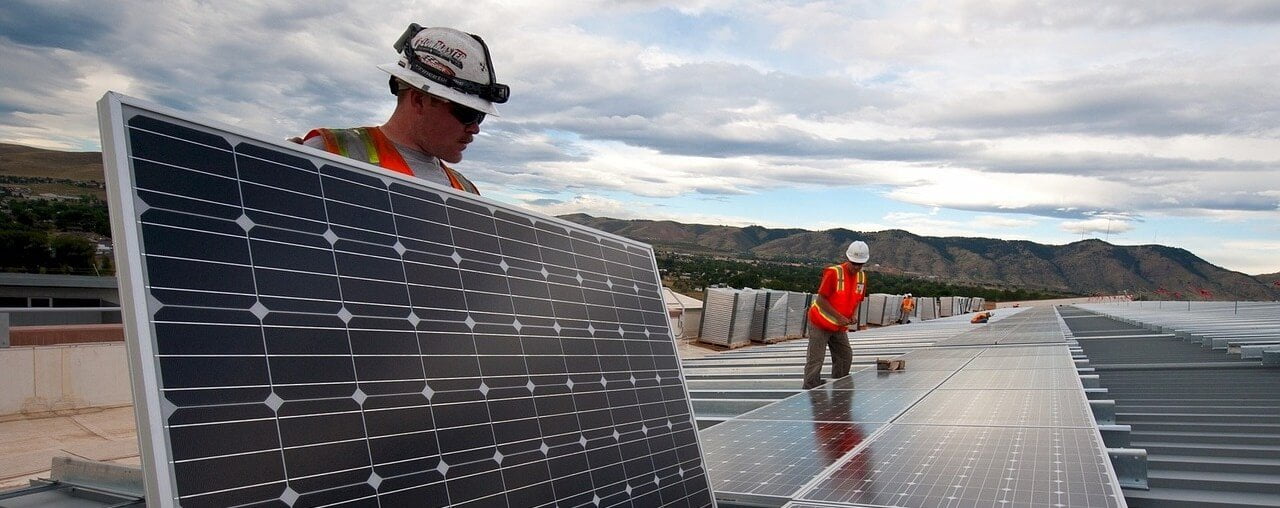
If you open any scientific news website, you will be inundated by articles about reduced activity preceding the 2020 solar minimum, but rightly so the question many businesses are asking is:
What effect will it have on rooftop solar generation?
When we think of the sun, we think of a big fiery ball that rises over the horizon every sunrise.
It is a constant, it never changes in our lives.
But science tells us something very different.
The sun is covered in small dark shadows, called sunspots.
These sunspots are highly magnetised and explode in spectacular solar flares which hurl incredible amounts of X-rays and ultraviolet radiation towards the earth.
Thankfully, the earth’s magnetic field protects us from this radiation and when there are intense periods of activity, we are rewarded with the Northern and Southern Lights displays.
So what exactly is the solar minimum?
The sun’s activity cycles last around 11 years with the peak of activity being called the solar maximum and the lull being called the solar minimum.
And guess what, the solar minimum will be with us in June 2020, which is next year! ‘Cycle 24’, as it is known, is expected to see even less solar activity than its predecessor, Cycle 23, which occurred in 2000-2001. The previous solar minimum – Cycle 22 took place in 1990.
You might be thinking that the solar minimum will wreak havoc with your rooftop solar array’s generation capabilities.
The reality is that there is absolutely nothing to worry about. Your solar unit will continue to happily turn out energy without missing a beat. Check out the NASA video below.
But the solar minimum means less sunlight… right?
In theory, yes it does… but let’s put it into context… According to scientific records, at the lowest known solar activity period between 1645-1715 (The Maunder Period), the amount of solar energy reaching the Earth’s surface was only 0.25% less than modern-day levels.
The period did coincide with a mini Ice Age, but this was due to a change to Ozone conditions and not a reduction of solar energy reaching the earth’s surface
A more recent but less intense solar minimum (the Dalton Minimum, from roughly 1790-1830), saw an overall solar irradiation level of only 0.08% less than today.
So what will the effect of the solar minimum be on my rooftop solar?
In reality, nothing. As time goes one and we become more technologically advanced, we should be more worried about the solar maximum when sun flares can interfere with the orbits of satellites in the sky and the International Space Station.
But when it comes to solar panels, you can rest assured despite the hype that they will continue to function normally.
Need more advice about rooftop solar?
Our Energy Management Consultants may not be astrophysicists but you can check out our Case Studies section to learn how they’ve helped other companies in Australia lower their business energy bills by installing rooftop solar.
















